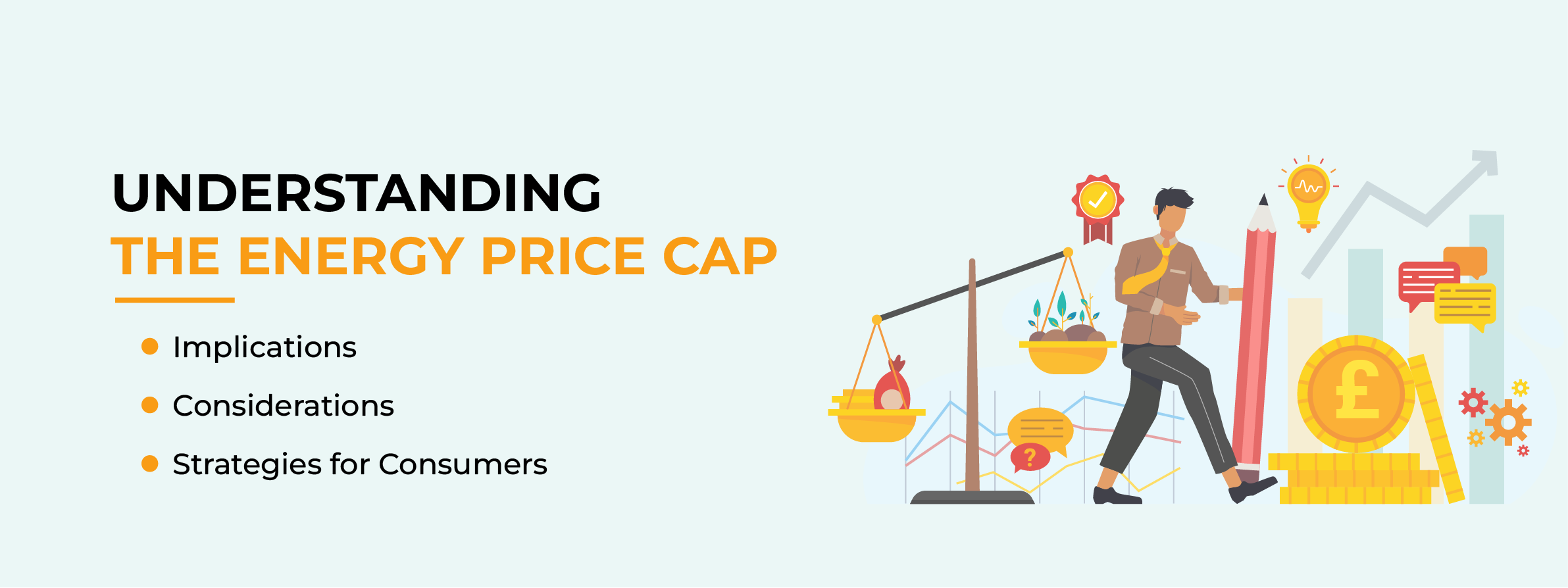Wholesale Energy Prices:
Fluctuations in wholesale energy prices have a direct impact on the cost of energy production, influencing the rates charged to consumers by energy suppliers.

The energy price cap has become a focal point in discussions surrounding energy affordability and consumer protection. Implemented by regulatory authorities, the price cap aims to mitigate the impact of fluctuating energy prices on households, particularly those on standard variable tariffs (SVTs) or default tariffs. In this comprehensive guide, we will delve into the nuances of the energy price cap, examining its latest updates, underlying factors influencing adjustments, its implications for consumers, and practical strategies individuals can employ to manage their energy expenses effectively.
The energy price cap serves as a regulatory mechanism designed to limit the maximum amount energy suppliers can charge consumers for their gas and electricity usage. It is intended to protect vulnerable consumers from unfair pricing practices and ensure they pay a reasonable rate for their energy consumption. The implementation of the price cap reflects policymakers' efforts to address affordability concerns in the energy market and promote greater transparency and fairness in pricing.
As of the latest update, the energy price cap stands at £1,928 for the average household on a dual-fuel standard variable tariff, paying by direct debit. This represents a 5% increase from the previous cap, highlighting the ongoing challenges posed by rising energy prices. Additionally, pre-pay customers and those paying every three months using cash or cheque face varying levels of increases in their average annual bills, further underscoring the need for consumers to stay informed about changes in the energy market.
Several factors contribute to adjustments in the energy price cap, including:
Fluctuations in wholesale energy prices have a direct impact on the cost of energy production, influencing the rates charged to consumers by energy suppliers.
Demand for energy tends to fluctuate seasonally, with increased consumption during the winter months due to heating requirements. This heightened demand can exert upward pressure on prices.
Political instability and conflicts in energy-producing regions can disrupt supply chains and contribute to volatility in energy markets, affecting prices worldwide.
Regulatory bodies, such as Ofgem in the UK, play a key role in setting and adjusting the energy price cap based on market conditions and consumer welfare considerations.
Understanding these underlying factors can help consumers contextualize changes in their energy bills and anticipate future developments in the market.
The energy price cap directly impacts millions of households across the country, influencing their monthly energy expenses and overall cost of living. For consumers on standard variable tariffs, the price cap serves as a safeguard against excessive price gouging by energy suppliers, providing a degree of financial stability amid volatile market conditions. However, despite the protective measures afforded by the price cap, many consumers still face challenges in managing their energy bills, particularly those on pre-pay meters or non-direct debit payment plans.
In light of the energy price cap adjustments, consumers are encouraged to explore options for mitigating the impact of rising energy costs. This may include switching to fixed-rate tariffs offered by alternative suppliers, which can provide insulation against future price rises and offer potential savings on energy bills. However, it's essential for consumers to conduct thorough research and compare available tariffs to ensure they choose the most cost-effective option tailored to their individual needs and usage patterns.
In addition to exploring tariff options, consumers can take proactive steps to reduce their energy consumption and lower their bills. Simple measures such as improving home insulation, using energy-efficient appliances, and adopting energy-saving habits can yield significant long-term savings and contribute to sustainability efforts. Furthermore, accessing available support schemes and financial assistance programs can provide relief for households facing financial hardship due to energy costs, ensuring access to essential heating and electricity services.
Conclusion
The energy price cap plays a crucial role in regulating energy costs and protecting consumers from excessive price fluctuations in the market. By staying informed about the latest price cap updates, understanding its implications, and exploring cost-saving measures, consumers can effectively manage their energy expenses and navigate the complexities of the energy market. With proactive planning, informed decision-making, and access to available support resources, individuals can mitigate the financial impact of rising energy prices and maintain affordable access to essential energy services.